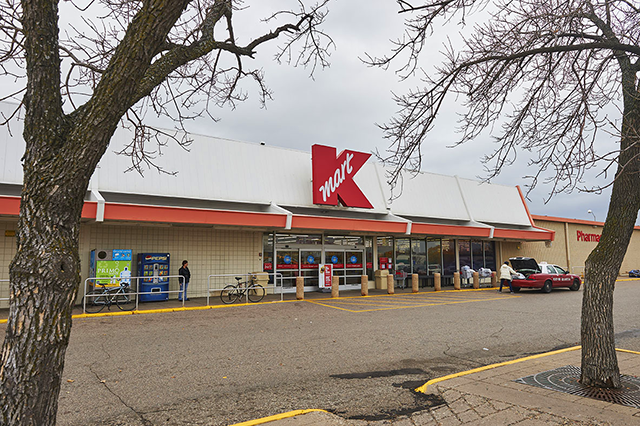The Lake Street Kmart must be one of the strangest sights to greet a Minneapolis visitor. As it runs north from the city’s southern border, Nicollet Avenue, arguably the city’s most famous street, suddenly dead-ends halfway to downtown.
The street itself runs directly through a massive parking lot and straight into the front doors of a vintage ’70s-era Kmart store, the red-and-white sign hovering over what should be public right-of-way.
It’s a remnant of desperate times, when Minneapolis tried to bulldoze its way to economic relevance by creating an urban shopping mall. When the original deal fell through, faced with vacant lots, the City Council reluctantly turned to a Kmart proposal that came with a bitter poison pill: replacing one of the city’s key intersections with a massive parking lot straight out of the suburbs.
Minneapolis is not alone in struggling with an aging big-box store. In suburbs, cities and rural areas, these buildings can present a reuse and rehab conundrum, particularly as retailers become more sophisticated about controlling leases and redevelopment.
But in Cottage Grove and Minneapolis, after years of struggle and blight, maybe some progress is under way.

